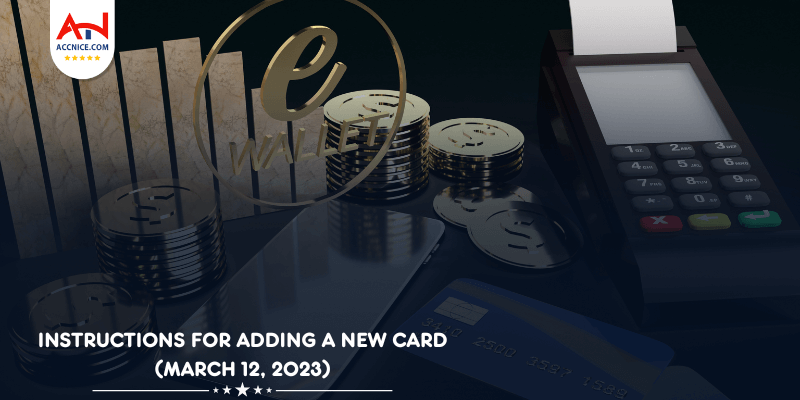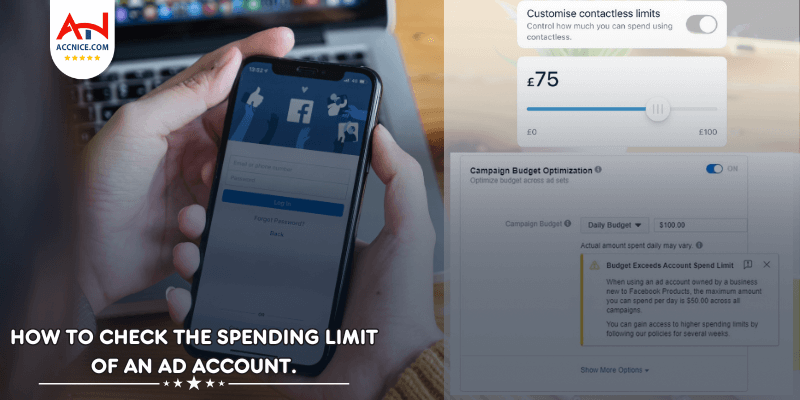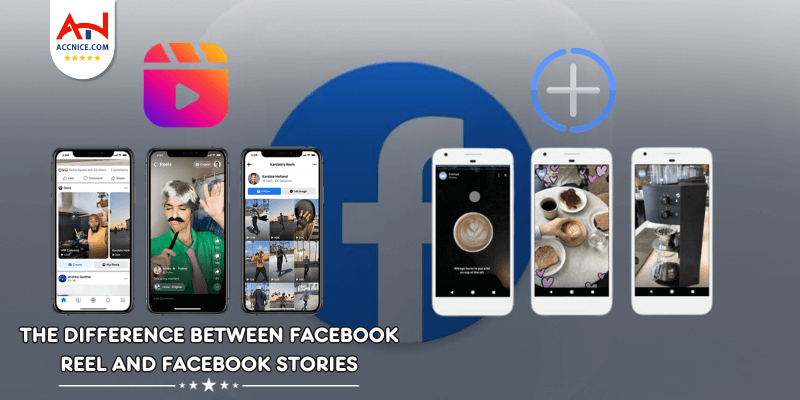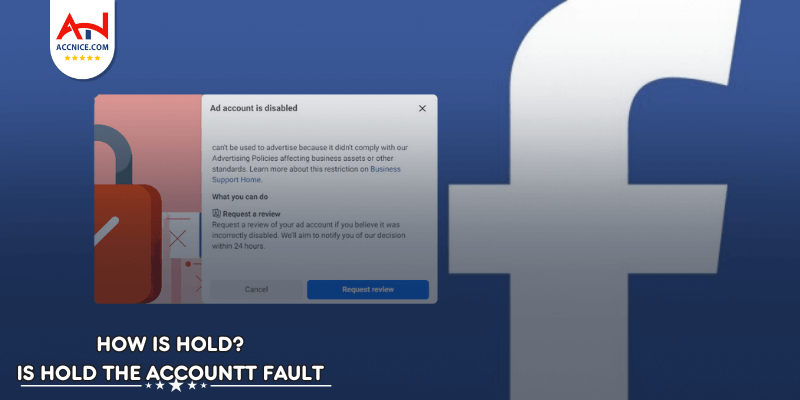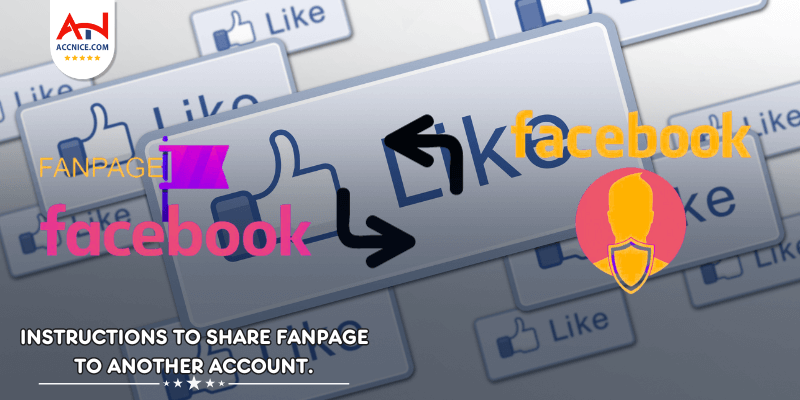How to Use Instagram Stories for Advertising
Author:
Ngày viết: 2024-07-28 15:28:35
Instagram Stories have become one of the most popular features on the platform, with more than 500 million daily active users. This makes it a powerful tool for advertisers looking to engage with their audiences in a more dynamic and interactive way. This article ACCNICE will guide you through the best practices for using Instagram Stories for advertising.
Why Use Instagram Stories for Advertising?

High Engagement Rates
- Ephemeral Nature: The temporary nature of Instagram Stories, which disappear after 24 hours, creates a sense of urgency that encourages users to interact with your content promptly.
- Interactive Features: Stories offer interactive features like polls, quizzes, and swipe-up links (for accounts with over 10,000 followers), which increase user engagement and provide immediate feedback from your audience.
Increased Visibility
- Prime Real Estate: Instagram Stories appear at the top of the user’s feed, making them one of the first things users see when they open the app. This prime positioning increases the chances of your content being noticed and engaged with.
- Frequent Viewing: Users are more likely to check Stories frequently throughout the day, providing multiple opportunities for your ads to be seen and interacted with.
Diverse Content Options
- Variety of Formats: Instagram Stories support various content formats, including photos, videos, boomerangs, and live videos. This diversity allows you to experiment with different types of content to see what resonates best with your audience.
- Interactive Stickers: Utilize features like polls, questions, countdowns, and sliders to make your Stories more engaging. These tools can help you gather feedback, increase engagement, and drive interactions.
- Creativity and Flexibility: The flexibility of Stories allows you to showcase your brand's personality through creative and dynamic content. Use filters, text overlays, GIFs, and music to make your ads stand out.
By leveraging Instagram Stories for advertising, you can take advantage of higher engagement rates, increased visibility, and a variety of content options to create compelling and effective ad campaigns. These elements combine to make Stories a powerful tool in your social media advertising strategy.
Setting Up Instagram Stories Ads
Create a Business Account
- Conversion to Business Account: If you haven't already, convert your personal Instagram account to a Business Account. This can be done in the settings menu of the Instagram app.
- Access to Insights: A Business Account provides access to Instagram Insights, which offers valuable analytics about your followers and the performance of your posts and ads.
- Promotional Capabilities: With a Business Account, you can promote your posts directly from the app, increasing their reach and engagement.
Link to Facebook Ads Manager
- Integration with Facebook Ads Manager: To create and manage Instagram Stories ads effectively, link your Instagram account to your Facebook Business Manager. This integration allows you to utilize the robust features of Facebook Ads Manager.
- Steps to Link Accounts:
- Go to your Facebook Business Manager and navigate to the Business Settings.
- Under the "Accounts" section, click on "Instagram Accounts."
- Click "Add" and enter your Instagram login details to link your account.
- Unified Ad Management: Managing your Instagram Stories ads through Facebook Ads Manager enables you to leverage advanced targeting options, set budgets, and analyze performance across both platforms from a single interface.
By setting up a Business Account and linking it to Facebook Ads Manager, you can efficiently create, manage, and optimize your Instagram Stories ads, ensuring they reach the right audience and achieve your advertising goals.
Crafting Compelling Instagram Stories Ads

Use High-Quality Visuals
- Eye-Catching Design: Given the highly visual nature of Instagram, it's crucial to use high-quality images and videos. Invest in professional design and photography to ensure your visuals stand out.
- Consistency: Maintain a consistent visual style that aligns with your brand identity. This helps in building brand recognition and trust among your audience.
- Vertical Format: Design your visuals in a vertical format (9:16 aspect ratio) to fit the Stories layout perfectly, maximizing the visual impact on mobile screens.
Keep It Short and Sweet
- Brevity: Each frame in Instagram Stories is limited to 15 seconds, so make sure your message is concise and to the point. Avoid overcrowding the frame with too much information.
- Text Overlays: Use clear and readable text overlays to highlight key points. This ensures that even if viewers watch without sound, they can still grasp the message.
- Strong CTA: Include a compelling call-to-action (CTA) such as "Swipe Up," "Tap to Shop," or "Learn More" to guide users towards the desired action. Make the CTA prominent and easy to follow.
Leverage Interactive Features
- Engagement Tools: Utilize Instagram's interactive features like polls, quizzes, and question stickers. These tools not only engage your audience but also provide valuable feedback and insights.
- Interactive Stickers: Use interactive stickers to encourage user participation. For instance, a poll about preferences or a quiz related to your product can make the ad experience more engaging.
- Swipe-Up Links: For accounts with over 10,000 followers or verified profiles, utilize the swipe-up feature to direct viewers to your website or a specific landing page. This can significantly drive traffic and conversions.
By crafting Instagram Stories ads with high-quality visuals, concise messaging, and interactive elements, you can create compelling content that captures attention, engages your audience, and drives desired actions.
Targeting the Right Audience
Use Custom Audiences
- Website Visitors: Create custom audiences by targeting users who have visited your website. This includes people who viewed specific product pages or engaged with your content.
- Email Subscribers: Upload your email subscriber list to create a custom audience. This allows you to target users who have already shown interest in your brand through email subscriptions.
- Past Customers: Target previous customers who have made purchases from your website. Retargeting them with new products or special offers can lead to repeat business and increased loyalty.
Leverage Lookalike Audiences
- Expanding Reach: Create lookalike audiences based on your custom audiences. These audiences consist of users who have similar characteristics to your existing customers, helping you reach a broader but still relevant audience.
- Optimizing Similarities: Adjust the similarity level of your lookalike audiences. A narrower similarity setting (1%) will be more closely matched to your existing audience, while a broader setting (10%) will increase reach but with less precision.
- Combining Audiences: Combine lookalike audiences with detailed targeting options such as age, location, and interests to further refine and optimize your ad delivery.
- Demographic Data: Use Instagram Insights to gather information about your audience's age, gender, and location. This helps you understand who your audience is and tailor your ads accordingly.
- Behavioral Insights: Analyze data on how users interact with your content. Identify which posts and Stories perform best, and use this information to inform your ad strategy.
- Interest-Based Targeting: Utilize the insights on what interests and activities your audience engages with. This enables you to create ads that align with their preferences and behaviors, increasing the likelihood of engagement and conversions.
By effectively targeting the right audience using custom audiences, lookalike audiences, and Instagram Insights, you can create more personalized and impactful ads that resonate with your potential customers, ultimately driving better results for your advertising campaigns.
Measuring Success

Track Key Metrics
- Impressions and Reach: Track the number of times your ad is displayed (impressions) and the number of unique users who see your ad (reach). These metrics help you understand the visibility of your ads.
- Click-Through Rate (CTR): Measure the percentage of users who click on your ad after seeing it. A higher CTR indicates that your ad is compelling and relevant to your audience.
- Conversions: Track the number of users who complete a desired action, such as making a purchase or signing up for a newsletter. Conversions are critical for assessing the effectiveness of your ads in driving desired outcomes.
- Engagement: Monitor likes, comments, shares, and other forms of engagement to gauge how well your content resonates with your audience. High engagement rates can lead to increased visibility and trust.
- Cost Metrics: Keep an eye on cost-related metrics such as Cost Per Click (CPC) and Cost Per Acquisition (CPA) to ensure your advertising spend is efficient and aligned with your budget.
Conduct A/B Testing
- Test Variations: Create multiple versions of your ads with different elements, such as headlines, images, CTAs, and ad copy. This helps you identify which combinations perform best.
- Single Variable Testing: Change one element at a time in each ad variation to isolate the impact of that specific element. This method provides clear insights into what drives performance improvements.
- Analyze Results: Compare the performance of different ad variations based on metrics like CTR, conversion rates, and engagement. Use these insights to determine the most effective ad components.
- Continuous Testing: Implement a culture of continuous testing to keep refining your ads. Regularly update and test new variations to stay ahead of audience preferences and market trends.
Optimize Based on Data
- Data-Driven Decisions: Use the data collected from tracking key metrics and A/B tests to make informed decisions about your ad strategy. Identify what works and what doesn't to improve future campaigns.
- Ad Adjustments: Based on performance insights, adjust your targeting, ad placements, and budget allocation to maximize ad efficiency. For example, if certain demographics respond better to your ads, focus more resources on targeting those groups.
- Content Refinement: Optimize your ad content by emphasizing elements that drive higher engagement and conversions. For instance, if a particular CTA or visual consistently performs well, incorporate similar elements into future ads.
- Campaign Optimization: Regularly review and adjust your overall campaign strategy to align with evolving goals and audience behavior. This might involve shifting focus between brand awareness and conversion-driven campaigns as needed.
By tracking key metrics, conducting thorough A/B testing, and making data-driven optimizations, you can effectively measure the success of your Instagram Stories ads and continuously improve their performance to achieve your advertising objectives.
Best Practices for Instagram Stories Ads
Maintain Consistent Branding
- Visual Identity: Use your brand’s colors, fonts, and logo consistently across all your Instagram Stories. This helps in building brand recognition and ensures that your content is immediately identifiable.
- Tone and Voice: Maintain a consistent tone and voice in your messaging. Whether your brand is playful, professional, or inspirational, ensure that your Stories reflect this personality.
- Story Templates: Consider using story templates that align with your brand’s visual guidelines. This not only saves time but also keeps your content cohesive.
Use Vertical Format
- Aspect Ratio: Instagram Stories are optimized for vertical viewing. Create your content in a 9:16 aspect ratio to ensure it displays correctly and utilizes the entire screen.
- Full-Screen Experience: Take advantage of the full-screen format to create immersive experiences. Use vibrant visuals and engaging animations that capture attention and encourage interaction.
- Responsive Design: Ensure that your visuals and text are easily readable and accessible on various devices. Test your Stories on different screen sizes to make sure they look great everywhere.
Include a Clear CTA
- Strong Call-to-Action: Always include a clear and compelling CTA. Phrases like "Swipe Up," "Learn More," "Shop Now," or "Sign Up" should be prominently displayed and easy to follow.
- Action-Oriented Language: Use action-oriented language that encourages users to take the next step. For example, "Discover Our Latest Collection" or "Join Our Community Today."
- CTA Placement: Place your CTA where it’s easily noticeable, typically towards the end of the Story frame. Ensure that it stands out against the background to grab users' attention.
Conclusion
Instagram Stories offer a unique and engaging way to reach your audience. By maintaining consistent branding, using the vertical format, and including clear CTAs, you can create compelling Stories ads that drive engagement and conversions. Leverage the power of Instagram Stories to enhance your advertising strategy and achieve your marketing goals.
Thank You For Following Accnice.com
Buy Facebook, TikTok, Twitter, Instagram, Google advertising accounts and Genuine License Keys at the best prices at Accnice.com












